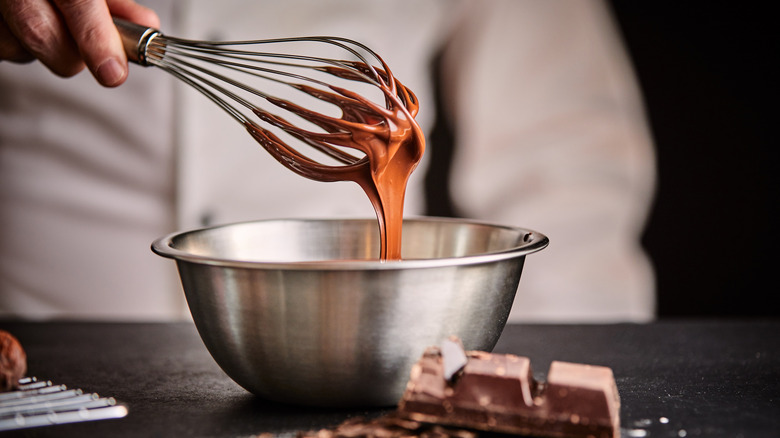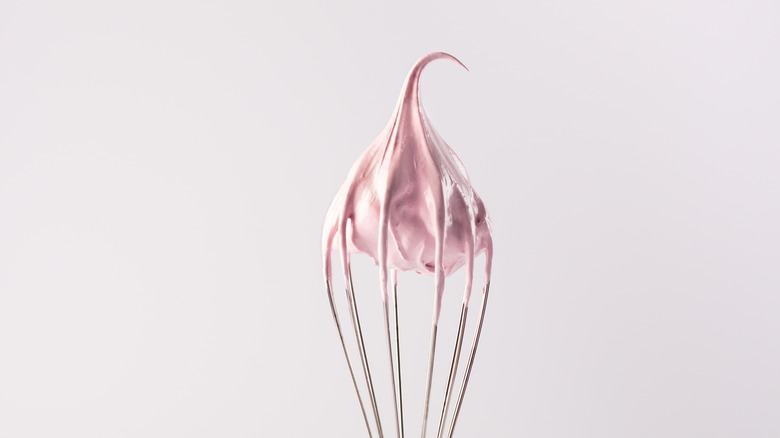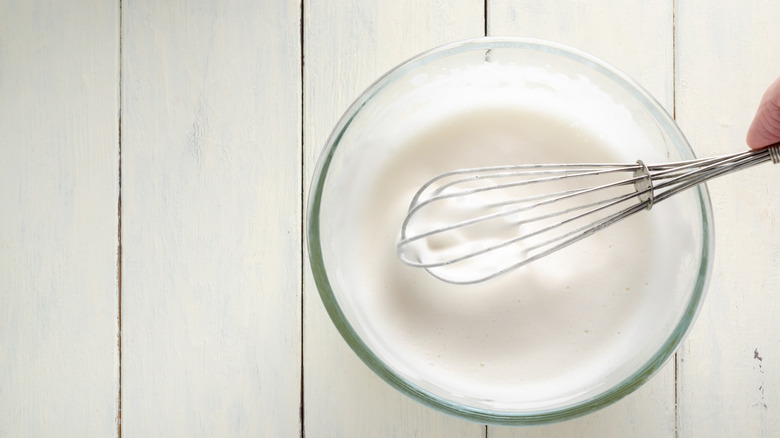We Have All Been Using A Whisk Totally Wrong. Here's Why
It can be hard to admit when you're wrong, but it might be even harder in the kitchen. Everyone likes to think that they're using a certain technique because it's got some kind of superiority. Every so often though we're just wrong, and that's okay. Now that you feel supported in this journey, we need to let you know you're using your whisk wrong. It's okay though; most of us are.
There are lots of whisks out there and lots of different ways to use them. This includes the beat, the figure-eight, and the classic stir; but the one that reigns supreme is actually the side-to-side method. America's Test Kitchen put all of these methods to a highly organized test, and the side-to-side method produced the best results and usually did so in half the time. This method made perfect whipped cream and egg whites in about five minutes and also produced a vinaigrette that stayed emulsified for up to 15 minutes after whisking had finished. The only category that it didn't win out in was mixing eggs, where the beating method managed to hold out.
This might not be the kind of food knowledge you'll use every day; but, as anyone who's ever sprained their wrist trying to keep a hollandaise sauce emulsified knows, it's a trick that pays off when you need it.
Why is this the best whisking method?
According to America's Test Kitchen, the side-to-side method is the winner of the whisk crown because of the amount of shear force it produces. Shear force refers to the amount of force that is generated parallel to another surface. In the case of whisking, that's the force created by the whisk as it breaks through the structures of the liquid being whisked. More shear force creates more shear strain. In the case of something like egg whites, that means more strain to break down the molecular structure of the egg's proteins and form new bonds with air trapped inside.
America's Test Kitchen says that the reason this method creates the most shear force is that it makes the liquid work against itself. The whisk creates shear force going in one direction with the liquid trailing behind. As the whisk reverses direction, it creates more force going in the opposite direction that collides with the opposing force it just created. This opposing momentum causes more strain to be created in your mixing bowl in a shorter period of time than stirring in one singular direction.
History of whisks
You would think we would have perfected using whisks a long time ago considering how old they are. There's evidence from the 1600s of the earliest proto-whisks being used in recipes. They called for beating ingredients with a set of twigs or birch rods that were clumped together. Then, in the 19th century, wire whisks became popular; and home cooking and baking were forever changed.
It was then quickly changed again, however, as the first mechanical whisks quickly came onto the market in the following years. Chez Panisse's Alice Waters told the New York Times that a similar crank-powered whisk was still the commonplace tool in American kitchens well into the 20th century. That is until Julia Child showed up. Waters credits Child with showing the country not only how to use a whisk, but which whisk is best for every dish.
Somewhere between Child and the new millennium, this knowledge must have been lost; but now the next time your electric whisk or stand mixer dies you won't have to go without fresh whipped cream.


